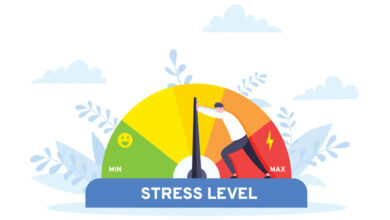You’ve just checked the morning mail to find–among your supplier’s invoices, customer’s payments and a stash of junk mail–an RFP (request for proposal) from a vaguely-known organization. You’ve never done business with the company, but you determine the scope of the work for which it is soliciting bids is lucrative. You expect the proposal bid to take six or seven hours of research and preparation, but it’s due next week.
What should you do? Do you have a legitimate shot at winning the bid? How do you know? Should you try to low-ball the bid in order to improve your chances of getting the work?
All valid questions, but not ones you should be asking yourself-at least, not yet. You will benefit greatly from better understanding the RFP, request for quotation (RFQ), or open bidding process first. I know, it is what not what one expects, but doing so will win you more business. I guarantee it.
A short story
Fresh out of the military, I took my first sales position in Tucson, Arizona. In the first month of that job, my district sales manager told me we were invited to bid on a very large opportunity at a local community college. He handed me the bid specifications and told me to access my newfound knowledge of our product lines, and “take a crack” at the first draft of our proposal. Oh, and it needed to be done in two days because our bid was due the following week.
The bid package was a dozen pages long and had about a hundred blanks that needed to be filled with calculations that clearly demonstrated we knew what we were doing, product names and data sheets, quantities, prices, terms and conditions, references, and a detailed description of the type and level of service we would provide throughout the contract period.
When I showed my finished bid package to my boss, he seemed impressed by the attention to detail I gave the assignment and complimented me on my work. He looked up from the proposal I had prepared and asked, “What do you think are our chances of getting this business?”
“Slim to none,” I replied.
He shot back, “Why?” With an epiphany of clear, rational thought-the origin of which I had no clue-I said, “Three reasons. One, we are not the cheapest water-treatment company around. Two, I’ve never set foot on the campus, let alone been inside the power plant. And finally, I have no clue about which part of the bid specification the decision makers at the college think is the most important. I’ve never even met any of these people listed in the RFP.”
It turned out he was pleased with the intuition of his newest employee and agreed that we didn’t have a snowball’s chance in you-know-where of winning the bid. So, we devised a new proposal, using a counter-intuitive tact. Everywhere there was a call for some information on the bid specification form we entered “No Bid.”
This served two purposes. First, by responding to the RFP, my company retained its position on the “preferred suppliers” list at the college for future bids. Second, it allowed us to offer the college’s purchasing and engineering departments help in evaluating the other submitted proposals-free-of-charge and without bias-because we had taken ourselves out of contention. To our surprise, the college took us up on our offer, provided they were allowed to redact the competitor’s names on each bid. Naturally, we agreed.
Throughout the discussions with the purchasing agent and chief engineer, we were able to illustrate discreetly why some of the exclusive features of our company-such as, timely emergency response, specialized studies, and in-depth operator training-should have been specified in the original RFP. The key decision makers agreed, and they decided to void the first bid and reissue a new one that we helped write. Because of the trust we developed there and the help we afforded them, we won the business because no one else could deliver completely on the new bid specifications.
Responsive, qualified, lowest bidder
Soon after the community college contract was won, I took advantage of an offer to attend a seminar entitled, “How to sell to Pima County.” The content of the seminar was developed specifically to serve the needs of local and state governments across the nation. Through my experiences with bid situations originating from privately-held and public companies, the major learning points from that seminar still apply today.
The seminar leader opened with the point that the county is not obligated to take the lowest quote on any RFP bid. She went on to explain that a competitive bidder must first be determined to be responsive, then qualified, before any quoted price was given consideration.
A “responsive” bid is one that is received on time, in the prescribed format, and is completed in full from a bidder that is on the agency’s preferred vendor list. Just to be invited to bid means a potential supplier submitted an application to be added to the preferred vendor list. But being on the list does not guarantee the agency or company will buy from that vendor. It simply establishes that the buyer recognizes the vendor as a viable supplier and will send RFPs to them, when appropriate.
If an RFP is published and distributed, and the preferred vendor is “non-responsive” to the bid, the supplier’s name may be removed from the list and thus be ineligible to participate in any future bids.
If your company ever receives an RFP-either from an organization that you know or from an unsolicited one-and you fail to respond to the bid with a “no-bid” letter, don’t be surprised if you are never asked again by that potential buyer to submit a quote for contract work. Of course, that may be your conscious choice as well. Interestingly, almost one-third of companies in the United States have a formal policy never to do business with a governmental agency because of their record of being slow payers and difficult customers.
If you inadvertently forget to complete a section of the RFP, the entire bid may be disregarded and determined to be “non-responsive.” So, for example, if the bid specifications call for a price on a particular type of sign installation, and you do not have the capability to adhere to the specs, one should enter a “no-bid” in that section rather than leaving it blank.
Continuing with the notion that you don’t have the capability to fulfill all of the bid specifications, and you enter a “no-bid” response, while your company can’t be accused of being non-responsive, it may be considered “unqualified” and cause your entire bid to be set aside.
A “qualified” bidder is one that has demonstrated an ability to fulfill all aspects of the bid specifications that the decision makers deem vital. Therein lies considerable subjective interpretation. The buyer has a great deal of latitude to determine if a bidder is qualified or not. Therefore, if an organization really doesn’t want a particular vendor to win the bid, it will likely find some aspect that does not meet the minimum standards set by the decision makers.
That may not seem very fair, but recognize that some companies and most government agencies wouldn’t be going out for bids if they didn’t have to. It is generally not the preferred manner of choice to award a piece of business. Instead, it is usually mandated by law or required by a higher authority, such as a board of directors. It is an unwritten yet widely accepted fact that, in well over half of all RFPs, the successful bidder has already been decided even before the bid is made public.
Once a select number of bidders have been deemed responsive and qualified, then the lowest bidder among those competitors is typically awarded the contract. Here, it is important that your company not over-propose the bid. Only submit proposals that meet the bid specification precisely. Don’t add features and benefits to a proposal that aren’t required by the bid specs. There will be time after you are awarded the bid to convince the buyer that your company’s exclusive features will enhance their satisfaction. They shouldn’t expect those special added features to come with the quoted price unless you included them in the proposal. Remember, they didn’t think those enhancements were important enough to include in the original RFP. If you include them because you believe it sets you apart from your competition, be prepared to provide them for free.
Reserve your bid-winning efforts to only those opportunities that are lucrative or have long-term cash-flow potential. Understand that you will likely forgo some gross-margin points to land a big contract, but if that lower gross margin is still acceptable and it keeps your equipment running and people busy despite seasonal peaks and valleys, then pursuing RFP/bid contracts can be a rewarding initiative.
Final thoughts
Here are some quick tips you may want to employ in your bidding practices:
- Assist in the writing of bid specifications whenever possible. You will need to focus on the customer-supplier relationship and establish yourself and your company as being likeable, trustworthy, and a pleasure to work with in order to be given the chance to help them write the RFP.
- If you currently are the incumbent in a contract that was won on a bid, ask if the ending date and terms of the contract can be extended without going out for bid so soon or as frequently. Multi-year agreements are preferred, provided there are price increases scheduled throughout various periods of the contract or based on well-publicized and accepted indices, such as the Consumer Price Index.
- If you decide to try and win a bid on a very low price, be prepared to be held accountable to and perform every aspect of your proposal-regardless of the adverse effect on your company’s profitability. Better yet, persuade your prospect to set the expectations for quality, service and delivery very high, then be the lowest-or sometimes, only-bidder that can deliver the goods.
Good luck and happy bidding!



